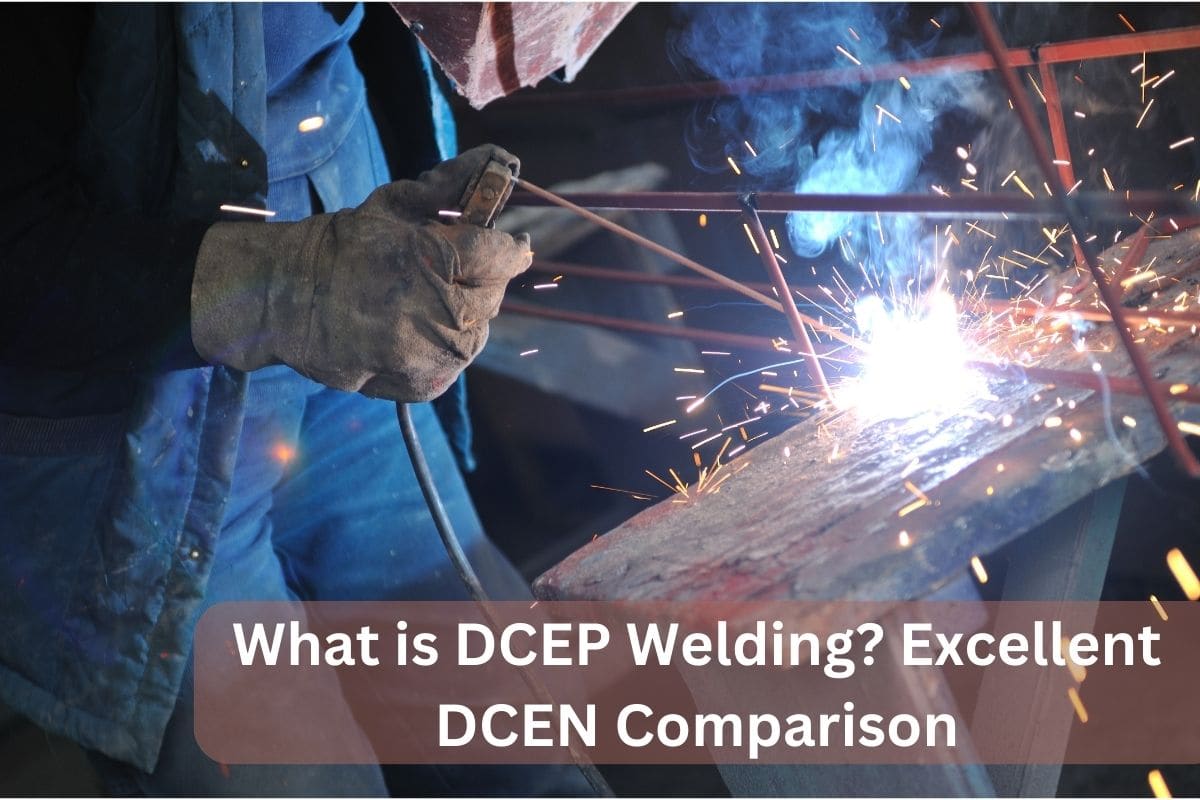Are you familiar with DCEP welding but not quite sure what sets it apart?
Today we’re dedicating our discussion to this welding method, dissecting its pros and cons and comparing it to its alternative, DCEN.
From what DCEP is to why you might choose it, we aim to provide you with a clear, detailed overview.
What Is DCEP Welding?
DCEP stands for Direct Current Electrode Positive. In this setup, the electrode connects to the positive terminal, and the base metal hooks up to the negative terminal of a DC power source.
Also known as Direct Current Reverse Polarity, DCEP has electrons flowing from the base metal toward the electrode tip.
Why Choose DCEP Welding?
Advantages
- Increased Metal Deposition Rate
One of the most noticeable benefits of DCEP welding is its metal deposition rate. Approximately 66% of the heat generated is near the electrode, melting it faster and allowing you to lay down metal more quickly.
If you’re looking for speed without compromising too much on quality, DCEP welding is the way to go.
- Reduced Distortion and Residual Stress
A faster welding process often means less heat applied to the material. Less heat translates to lower levels of distortion and residual stress in your final product.
If you’re working on projects where the appearance and structural integrity are crucial, DCEP welding could be your new best friend.
- Ideal for Certain Metals
DCEP welding is particularly effective for joining materials like copper and aluminum. These metals can be tricky to work with, so a method that caters to their needs can save you a lot of trouble.
- Cleaner Welding Experience
Expect cleaner arcs and less contamination with DCEP welding. The process has the unique ability to remove oils, corrosion, and other contaminants from the base metal, which ultimately leads to fewer defects in the weld.
Disadvantages
- Shorter Electrode Life
It’s not all rosy, though. The electrode in DCEP welding tends to wear out faster. This means you might find yourself changing electrodes more often than you’d like. So, factor that into your planning.
- Low Penetration Levels
If you’re working with thicker plates or metals with high melting points, DCEP welding might not be your best bet. It has limitations in penetrating deep into such materials, so look elsewhere if deep penetration is your primary concern.
- Incomplete Fusion and Higher Reinforcement Needed
Be cautious of incomplete fusion. Lower heat at the base metal could result in a lackluster joint. Moreover, you may have to add some extra reinforcement to make up for these limitations.
How Does DCEP Compare with DCEN?
When you’re selecting a welding method, understanding the differences between DCEP and DCEN can be pivotal. DCEN, or Direct Current Electrode Negative, serves as the counterpoint to DCEP in many ways.
Primarily, DCEN excels where DCEP shows limitations—namely, in achieving high penetration levels. This characteristic makes DCEN suitable for welding thicker plates, a feature that’s critical for structural projects or heavy machinery repairs.
However, one key aspect where DCEN falls short is in arc cleaning. Unlike DCEP welding, DCEN does not help in removing oils, corrosion, or contaminants from the base metal. In DCEP welding, the cleaning action is like a built-in quality control measure.
So, your choice between the two might very well hinge on what you value more: is it penetration, or is it cleanliness?
What Types of Welding Work Best with DCEN?
While we’ve been singing the praises of DCEP welding, there are certain welding types where DCEN tends to be a more favorable option.
- TIG Welding
TIG welding is commonly performed using DCEN to prevent the tungsten electrode from overheating.
Given that tungsten has a high melting point, using DCEN helps in directing more heat towards the base metal, thereby preserving the electrode and achieving better penetration.
- SMAW
Shielded Metal Arc Welding (SMAW) is a highly versatile process that can use either AC, DCEN, or DCEP currents. If you opt for flux core electrodes, you’ll find them to be particularly compatible with DCEN.
The versatility of SMAW allows for considerable flexibility, making it a popular choice among welders for various applications.
What Should You Choose?
Making an informed choice between DCEP and DCEN is more than just picking one over the other; it’s about aligning the method to the specific demands of your project and the materials you’re using.
For instance, if you’re welding aluminum or copper, DCEP’s superior cleaning action and lower residual stress make it a compelling choice.
On the other hand, if you’re tackling thicker, more robust materials, DCEN and its high penetration could be more aligned with your needs.
That said, understanding the advantages and limitations of each method empowers you to make the best decision.
Always consider factors like metal thickness, required penetration, and electrode life when choosing between DCEP and DCEN.
By aligning your project needs with the strengths of each method, you’re setting yourself up for a more successful welding experience.
Read Also : Why do Welders Drink Milk? Strong Safety Tips
Conclusion
So there you have it! DCEP welding offers a host of advantages like higher metal deposition rates, reduced distortion, and better suitability for certain metals.
However, it comes with its own set of limitations, such as electrode wear and lower penetration. It’s all about knowing what you need for your specific project. Here’s to making more informed decisions in your welding projects!


